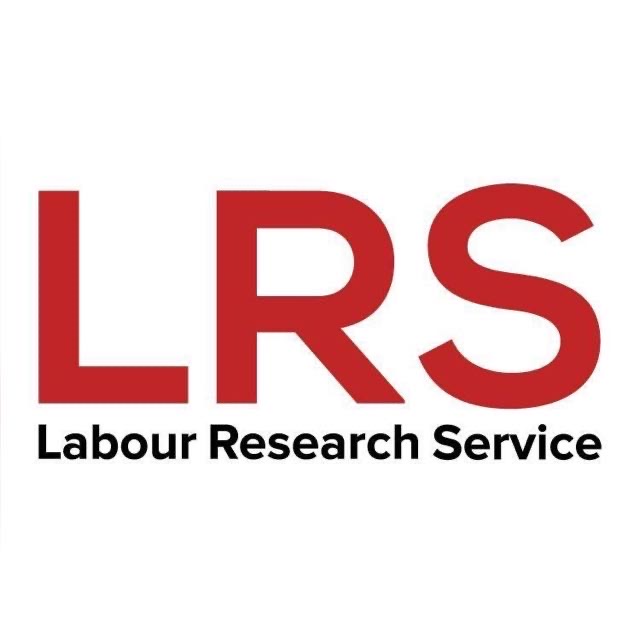Retrenchment
The Company wants to retrench 24 employees. Two employees have accepted voluntary retrenchment before the process starts. There is one position available for a receptionist, which will be given to one of the affected employees. This leaves the company with 21 employees to be retrenched. The company is offering one week’s severance pay to the retrenched employees.
What does the law say?
The Labour Relations Act states that when the employer contemplates retrenching employees based on operational requirements, he or she must consider Section 189-195 of the Labour Relations Act, which provides accepted reasons for retrenchments and the procedures that need to be followed.
The LRA states that there must be a good reason for retrenchment based on operational requirements. The retrenchments must relate to the economic situation, technological changes in the workplace, and/or new management structures.
The Act provides procedural steps to be taken before embarking on retrenchment. The employer must consult with the worker representative from the union or workplace forum if there are no unions in the workplace. The consulting parties must attempt to reach consensus on the following:
- appropriate measures to avoid the retrenchments
- appropriate measures to minimise the number of retrenchments
- the timing of the retrenchment
- ways to mitigate the adverse effect of the retrenchments
- the criteria to be used in selecting which employees to retrench, for example, last in first out, or those close to retirement
- terms of the severance package to be issued to retrenched workers.
The employer must provide relevant information in writing to the other consulting party, which might include: reasons for the proposed retrenchment, the alternatives that the employer considered before proposing retrenchment, and the reasons for rejecting each of those alternatives.
Dispute Procedures
If there’s a dispute regarding retrenchment based on operational requirements, the aggrieved party can refer the matter to the CCMA and then go directly to the labour court if no settlement is reached through conciliation and mediation.
A worker is unfairly dismissed for misconduct
A worker worked for a company for 20 years. In March 2020, he was dismissed for absenteeism and alcohol abuse in the workplace.
What does the law say?
The Labour Relations Act: Section 7 guidelines in cases of dismissal for misconduct states that any person who is determining whether a dismissal for misconduct is unfair should consider:
(a) Whether or not the employee contravened a rule or standard regulating conduct in, or of relevance to, the workplace; and
(b) If the rule or standard was contravened, whether or not:
i. The rule was a valid or reasonable rule or standard;
ii. The employee was aware, or could reasonably have been expected to be aware, of the rule or standard;
iii. The rule or standard has been consistently applied by the employer; and
iv. The dismissal was an appropriate sanction for the contravention of the rule or standard.
Dispute Procedures
In the case of an unfair dismissal dispute, you have only 30 days from the date on which the dispute arose to refer the case to the CCMA or bargaining council for conciliation.
If no agreement is reached, the commissioner will issue a certificate to that effect. Depending on the nature of the dispute, the case may be referred to the CCMA for arbitration or the labour court as the next step.
The obstacles the negotiator could face:
- Sometimes, the company can use dismissal because they are purposefully trying to remove a specific employee from the company (especially a shop steward);
- If a worker committed an offence, but the worker is not honest, or the company has substantial evidence like video footage, this can compromise the case.
When to call for legal advice:
Only when a case is reviewed in the labour court.
The negotiator’s ideal outcomes:
The negotiator is able to prove that the worker has been unfairly dismissed, and the worker is retrospectively reinstated.
A woman feels that she is paid less because she is a woman
Women are still paid less than men in South Africa.
“In my company, I am not being remunerated for the work I am doing. I know this because the men doing the same kind of work that I am doing are being paid a higher salary.”
What does the law say?
The Employment Equity Act states that an employer must submit a report to the Employment Equity Commission that shows wages and benefits for each employee. Where disproportionate income differentials are reflected in the report, an employer must take measures to progressively reduce such differentials subject to guidance as may be given by the minister. Parties to a collective bargaining process may request the report employers submit to the Employment Equity Commission for collective bargaining purposes.
The obstacles the negotiator could face:
- The company does not consult the union while drafting the report for the Employment Equity Commission, and merely calls the shop steward to sign the report once it is done;
- Discrimination is difficult to prove.
When to call for legal advice:
Legal advice is almost always necessary when dealing with discrimination cases, as these are often difficult to prove.
The negotiator’s ideal outcomes:
- Proper consultation in the drafting of the Employment Equity Report;
- The union successfully proves the company is discriminating on the basis of gender and the worker is remunerated appropriately going forward and retrospectively.
A company makes unilateral changes to the terms and conditions of employment
After embarking on a retrenchment process, the company sent out a notification to the remaining employees stating that it intended to reduce the meal allowance, living-out accommodation allowance and salaries by 15%.
What does the law say?
The Basic Conditions of Employment Act (BCEA) states that changes to the terms and conditions of employment cannot be made without prior consultation with the employee and/or without the employee’s agreement. Any changes need to be agreed to by the affected employees or their union.
The obstacles the negotiator could face:
- Company implements changes without consulting the union.
- Workers might get angry because of the lack of consultation and embark on illegal strikes.
When to call for legal advice:
Union and workers need to consult with the union legal officer before embarking on any kind of action.
The negotiator’s ideal outcomes:
The employer reverses any changes to the conditions of employment and engages in a process of negotiations.
A company refuses to disclose information
During wage negotiations, the company indicated that profit has declined, and they cannot afford the union demand of a 15% wage increase. The union requests the company financial statements, but the company refuses to provide the financial statements to prove their claim.
What does the law say?
The Labour Relations Act states that an employer must disclose to a trade union representative all relevant information that would allow the trade union representative to perform their functions of representing workers effectively. Whenever an employer is consulting or bargaining with a representative trade union, the employer must disclose to the representative trade union all relevant information that will allow the representative trade union to engage effectively in consultation or collective bargaining. The employer must notify the representative trade union in writing if any information disclosed is confidential.
Dispute Procedure
If there is a dispute about what information is required to be disclosed in terms of this section, any party to the dispute may refer the dispute in writing to the CCMA. The CCMA must attempt to resolve the dispute through conciliation. If the dispute remains unresolved, any party to the dispute may request that the dispute be resolved through arbitration.
The obstacles the negotiator could face:
- The company might try to find ways of hiding important information.
- The company might provide information that has not been audited and might therefore be skewed or inaccurate.
When to call for legal advice:
If the company refuses to hand over information, it will be necessary to consult with the legal department.
The negotiator’s ideal outcomes:
The company discloses information that assists the negotiator to bargain effectively.
Keen to know which law to use for the following scenarios? Check out this section of the LRS Negotiator’s Guide: Using the law to support bargaining strategies
- An employer refuses to recognise a trade union
- The union and company are in dispute about unfair dismissals and unfair labour practices
- A worker experiences unfair discrimination
- An employer is not paying UIF for the employee
- A worker is not remunerated fairly for night shift and overtime
- Casual workers are not receiving the same wage and benefits as full-time workers
- An employer refuses to honour a collective agreement
- A worker has no formal contract of employment
- In a company, the contracts of employment of workers are transferred to a new owner
- Workers are locked out as a result of strike action
- There is a lack of health and safety in the workplace







